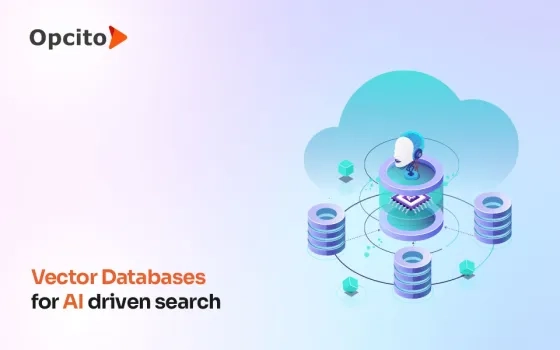The widespread impact of the CrowdStrike outage has forced businesses to reevaluate their cybersecurity strategies. Luckily, the incident didn't breach any systems, but it revealed the fragility of even the most sophisticated security infrastructures and emphasized the critical nature of proactive vulnerability management systems. Vulnerabilities can cause severe damage to organizations as well as users. For example, when a vulnerability was identified in OpenSSL, previously known as Heartbleed, it allowed hackers to steal sensitive data from approximately 17% of all SSL servers, impacting over half a billion users. Therefore, understanding the full spectrum of vulnerability risks is essential for safeguarding modern organizations. DevOps speeds up software development but also creates more opportunities for hackers. To protect systems, we need intelligent ways to find and fix vulnerabilities before attackers do.
Understanding vulnerability risks
Modern apps and infrastructure are made up of millions of pieces. Cloud services, microservices, and APIs are all part of the mix, making things super complex. On top of that, DevOps is pushing us to move faster than ever. This speed is great for business but creates new security risks. Every code change, new server, or software update is a potential opening for troublemakers. We must build security into everything we do right from the start to stay ahead.
The most common types of vulnerabilities in DevOps environments
- Code injection: This vulnerability is dangerous and lets hackers sneak harmful code into systems. Imagine someone injecting harmful code into your online store's checkout process. This can lead to data breaches, financial loss, and a whole lot of trouble.
- Insecure APIs: APIs are the doorways to your digital world. It's like leaving your front door unlocked if they're not guarded well. Hackers can exploit weak API security to steal data, tamper with information, or even take control of your systems.
- Misconfigurations: This one is more about human error than malicious intent. Misconfigurations happen when systems, networks, or applications aren't set up correctly. This can expose sensitive data, allow unauthorized access, and create opportunities for attackers to exploit weaknesses.
- Supply chain attacks: These attacks are increasingly becoming a top concern. The complexity of modern software development, involving numerous third-party components, makes it challenging to ensure the integrity of the entire supply chain. A compromised dependency can lead to widespread and catastrophic consequences.
- Infrastructure as Code (IaC) misconfigurations: IaC misconfigurations can have serious effects. The rapid adoption of cloud computing and automation has amplified the potential for errors in IaC templates. Misconfigurations can expose sensitive data, grant unauthorized access, and create vulnerabilities attackers can exploit.
These vulnerabilities highlight the need for solid core principles of vulnerability management. By adopting a proactive and systematic approach, you can effectively identify, prioritize, and remediate risks to safeguard your digital assets and maintain business continuity.
Steps for building a robust vulnerability management program in DevOps environments
Finding and fixing your security weaknesses before hackers do is critical. Today's vulnerability scanners are designed to scan your systems continuously and automatically assess the risks while generating reports to prioritize vulnerabilities for remediation. There are essentially four stages for a successful vulnerability management program.
- Identification: The initial and most crucial step in any vulnerability management process is to uncover all potential weaknesses within your environment. A vulnerability scanner accomplishes this by examining a broad spectrum of accessible systems, from laptops and desktops to servers, databases, firewalls, switches, printers, and more. The scanner identifies open ports and active services on these systems, delves deeper to gather detailed information, and then correlates this data with known vulnerabilities. These findings can be transformed into reports, metrics, and dashboards for various stakeholders. Creating a comprehensive inventory of all systems, applications, and devices is essential for effective vulnerability management. This asset discovery process provides a clear picture of your IT landscape, aiding in identifying potential blind spots.
- Evaluation: Once vulnerabilities have been identified, the next critical step is to evaluate their potential impact on your organization. This process involves prioritizing vulnerabilities based on their severity and likelihood of exploitation. Vulnerability scoring models like the Common Vulnerability Scoring System (CVSS) can be employed to assess risk effectively. These models offer a consistent way to measure vulnerability impact. However, relying solely on scores can be misleading, as other factors, such as the specific nature of your environment and the availability of exploits, must also be considered. By combining vulnerability scores with a comprehensive risk assessment, organizations can determine how to prioritize remediation efforts. This involves weighing the potential impact of a vulnerability against the cost and effort required to address it. A well-defined vulnerability management policy can provide essential guidance for making these critical decisions.
- Treatment: Once vulnerabilities have been prioritized, they must be addressed effectively. This involves a strategic approach that combines technical solutions, risk assessment, and operational efficiency.
- Remediation: This is the most preferred method of eliminating the vulnerability through patches, updates, or configuration changes. However, in some cases, immediate remediation might not be practical due to system dependencies, resource constraints, or potential disruptions to operations.
- Mitigation: Mitigation is the next best option when remediation does not work. It involves implementing temporary measures to reduce the likelihood of a successful attack. This might include disabling vulnerable components, applying workarounds, or increasing monitoring and detection capabilities. Mitigation should be considered a stop-gap measure, with remediation remaining the goal.
- Acceptance: Acceptance might be a viable option for vulnerabilities deemed to pose minimal risk. This decision should be carefully evaluated and documented, considering factors such as the potential impact, the availability of compensating controls, and the organization's overall risk tolerance.
- Reporting: To effectively manage vulnerabilities, you need to understand how well you're doing. Regular check-ins on your progress are essential. Visual reports can be a game-changer, offering clear insights into your security posture. With these insights, IT teams can prioritize fixes and security teams can track improvement over time. Streamline operations by integrating vulnerability, ticketing, and patch systems. This smooth workflow helps everyone work together efficiently. By measuring your success and sharing your findings, you can demonstrate your commitment to a secure environment and meet compliance requirements.
Best approach to vulnerability management in DevOps
A proactive and comprehensive approach to vulnerability management is paramount for safeguarding our organization and clients. Here's a glimpse of the best practices that you must follow:
- Know your assets: Understanding your digital footprint is foundational. Meticulously inventory all systems, applications, and devices, both internal and external. This granular visibility will empower you to prioritize security efforts effectively.
- Prioritize what matters: Not all vulnerabilities are created equal. Classify assets based on their criticality to the business, assigning clear ownership and responsibility. This ensures that the most critical systems receive the highest level of attention.
- Continuous vigilance: Employ advanced automated tools to scan your environment tirelessly for vulnerabilities. This proactive approach can help you identify and address threats faster.
- Act decisively: When vulnerabilities are identified, prioritize remediation based on their potential impact on your operations. Empower the team to take swift action, minimizing risk exposure.
- Learn and improve: Continuously analyze your vulnerability management program to identify areas for improvement. Optimize your processes and enhance your security posture by leveraging data and insights.
Overcoming challenges and future trends
The complexities of modern IT environments and the rapid pace of DevOps have heightened vulnerability risks. By implementing a comprehensive program that includes identification, evaluation, treatment, and reporting, organizations can significantly strengthen their security posture. Overcoming challenges requires a strategic approach, including automation, prioritization, and a strong security culture. To thrive in this evolving threat landscape, organizations must continuously adapt their vulnerability management strategies and embrace emerging technologies.























